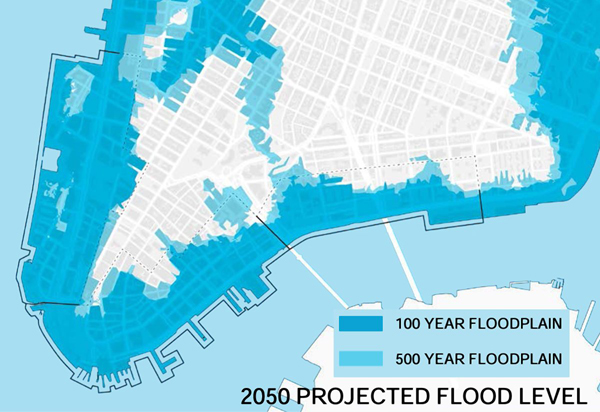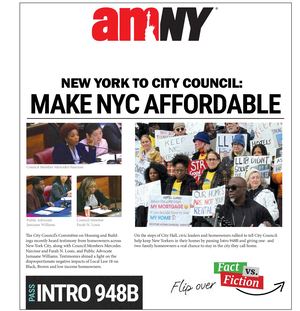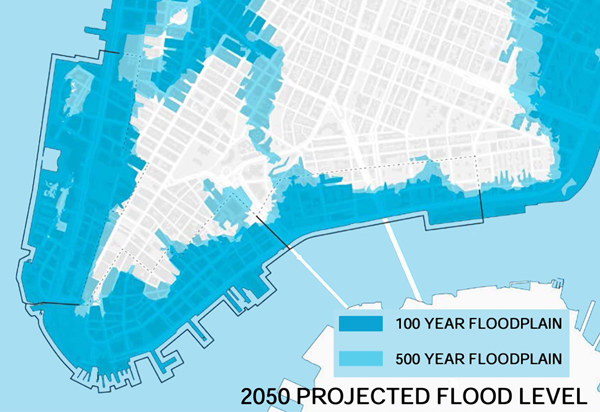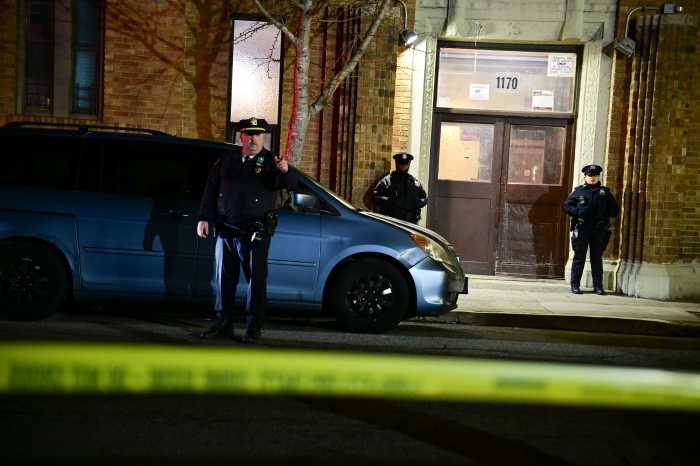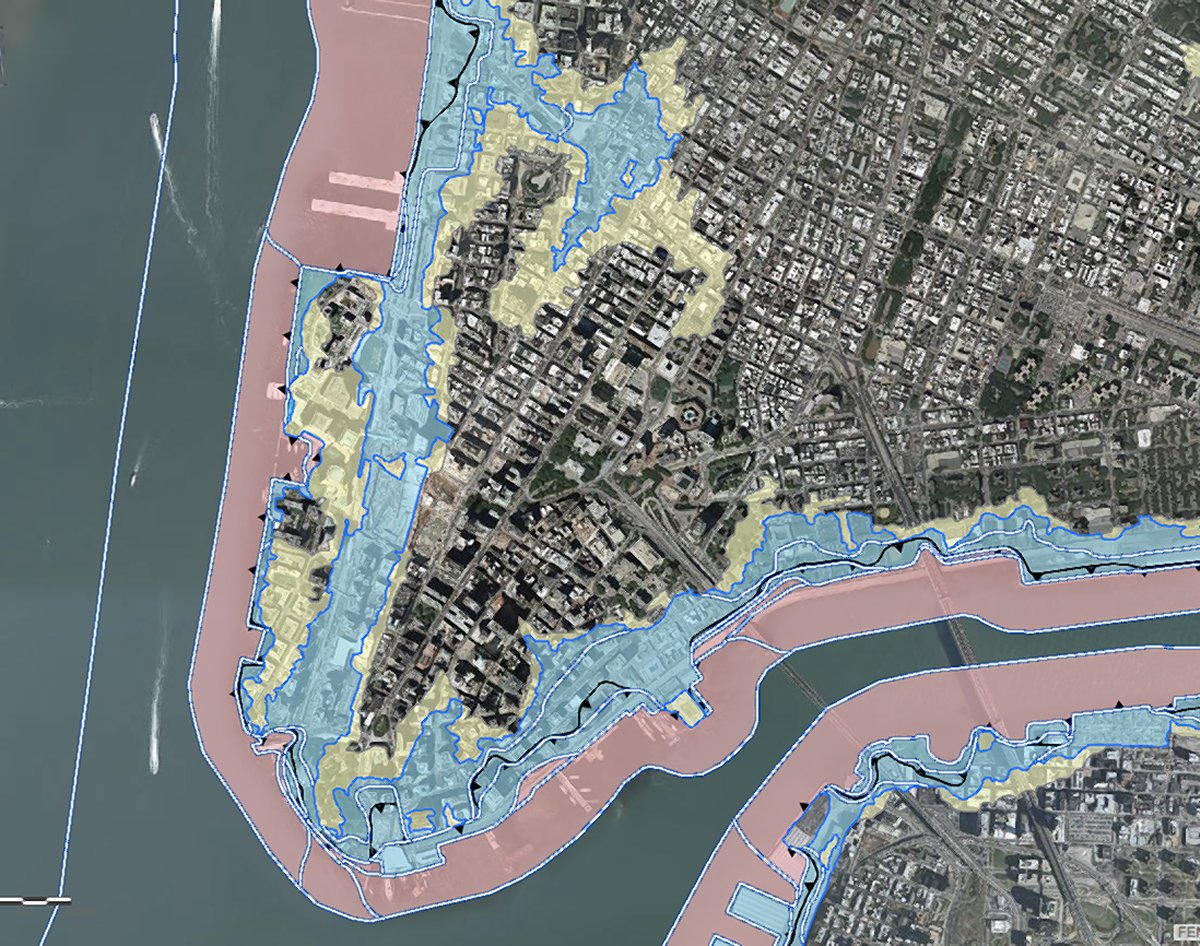
The maps of revised flood risk that the FEMA released in 2013 would have moved tens of thousands of homes and properties into the highest risk zones, causing huge leaps in insurance premiums. The City has successfully appealed those preliminary maps, and FEMA has agreed to work out new ones that better differentiate near-term and long-term flood risks.
BY DENNIS LYNCH
The federal government has finally agreed to take another pass at the revised flood-risk maps it drew up after Hurricane Sandy which would have slammed thousands of homes and properties with sky-high rate hikes for flood insurance
When the Federal Emergency Management Agency unveiled preliminary versions the city’s new Flood Insurance Rate Map, or FIRM, Mayor DeBlasio asked the agency for a do-over on the map because it added 70,000 city properties into the “highest risk” areas — double the number as in the pervious FIRM from 2007.
The city forked over a 188-page report and a terabyte and a half of their own flood-risk data to convince FEMA they got it wrong, and after a year, the agency finally agreed.
“The general premise was that they believed there were several aspects of our analysis that we could have done better, and after a lot of discussion, we decided they were right,” said Andrew Martin, acting chief of the Risk Analysis Branch in FEMA Region II.
If City Hall succeeds with its planned redraw, it could potentially move thousands of properties from the “highest risk” flood areas into those deemed merely “high risk.” Property owners in the “highest risk” areas pay dramatically higher rates for flood insurance and FEMA claims that revising the maps could save coastal property owners “tens of millions of dollars” in premiums.
The point of FIRMs is to estimate the height and inland penetration of a major flood which would have a one-percent chance of occurring in any given year — sometimes misleadingly referred to as a “100-year flood” — so as to help calculate the risk and extent of damages, which thus determines insurance rates.
Martin said FEMA is unsure how the new data will affect expected flood zones in Lower Manhattan, but he generally expected flood risks to go down compared to its 2013 map, but still be up from the 2007 map FEMA currently uses.
Most at-risk properties are in Queens, Staten Island, and Brooklyn, but there were around 2,100 buildings in Manhattan in that “highest risk” floodplain in the 2007 FIRM and nearly twice as many — 3,000 — in the preliminary 2013 map.
FEMA began its research for its 2013 maps in 2010 and so had not incorporated flood data from Hurricane Sandy, Hurricane Irene, or last year’s nor’easter. Integrating the data from those storms will help validate FEMA’s storm models, Martin said.
“New York City is particularly challenging to model because there haven’t been a lot of tropical storms that hit it directly,” he said. “We have had to model potential strikes and storms without a lot of historical information as validation.”
Martin said the re-analysis will take six to nine months to complete, but it will be another few years before FEMA will have new maps. Insurance companies will continue to use the old 2007 FIRM until then.
But even the city admits that the upcoming revisions will provide only a short-term respite. Projections from the Lower Manhattan Coastal Resiliency Project taking global warming a rising sea levels into account show th 2020 flood risk map nearly identical to the 2013 FIRM that had the city scrambling for revisions. The 2050 flood plain map virtually turns Fidi into an island of its own.
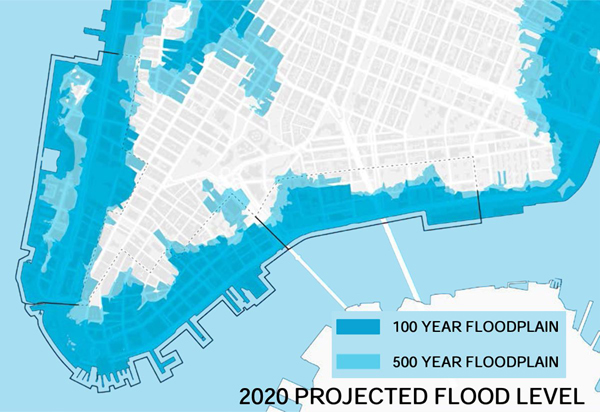
Projections from the Lower Manhattan Coastal Resiliency Project taking global warming and rising sea levels into account show the 2020 flood risk map to be nearly identical to the 2013 FIRM that sent the city scrambling to get revisions. And the flood plain map for 2050 virtually turns Fidi into an island of its own.
